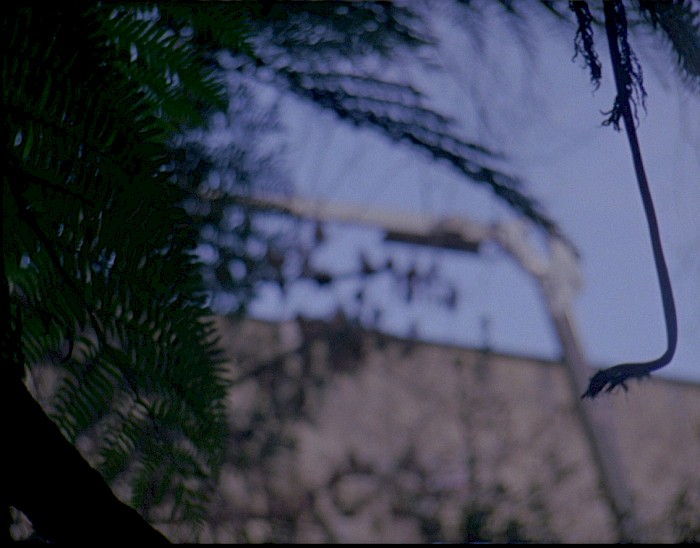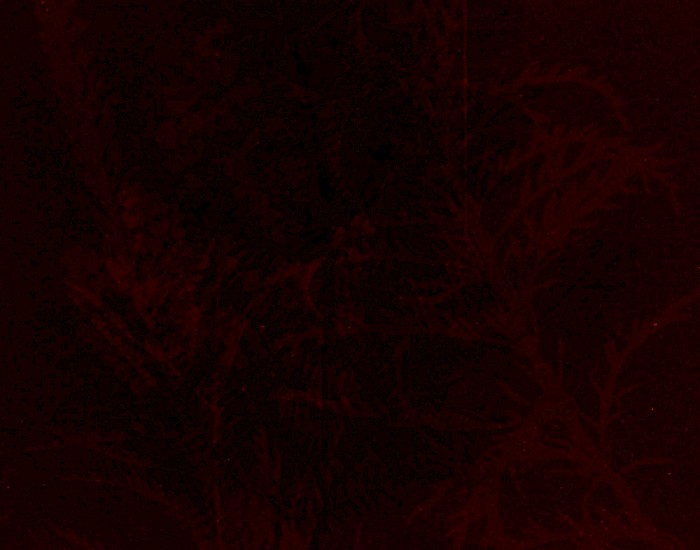Shown in Compétition #3.
Synopsis
During his trip to Italy, Goethe visited the botanical gardens of the cities where he stayed. He fantasized about discovering the existence of the primitive plant: the mold where all the others, despite their difference in shape, would have formed. During the shooting of a film adapted from this trip, I went twice to the Botanical Garden of Naples. Both times the filmstrip was visited by a ghost. I saw there the ghost of this primitive plant, but also the memory of the very beginning of the photographic recording, these photogenic drawings of plants invented by Henry Fox Talbot.
Text from the selection committee
Goethe’s concept of a primal plant (from his Italienische Reise) meets a selection of Henry Fox Talbot’s photogenic drawings (taken from the iconic The Pencil of Nature, 1844-46) in Olivier Cheval’s Die Urpflanze. An ethereal companion piece to his 2018 work Le Songe de Lady Hamilton, Die Urpflanze is Cheval’s most abstract and unconventional film, showing yet another stylistic direction in his body of work that ranges from musical comedy to conceptual 3D animation and found footage.
– S.M.
During your filming at the Botanical Gardens of Naples, a ghost visits the film, the medium you were filming with. What is your relationship to this medium? What happens to the ghost when the film is digitised? Is there, for you, a relationship between ghosts and the analogue medium?
A ghost visited the film twice. I went to Naples, I filmed, I developed the film, I saw the accident, I went back to do the same shots again, but another ghost had invited itself in again. I shot a lot of shots with this same camera for a film adapted from Goethe’s Journey to Italy, in the city, in the port, in a boat, on top of two volcanoes. But only the botanical garden was haunted. Once, it was an accident. Twice is a sign. It was necessary to try to understand this bad fate as a chance. The story of the primitive plant would not be in my fiction film Lady Hamilton’s Dream, but it would be the subject of a separate film. That gave rise to Die Urpflanze. Only analog cinema is a living medium that can know these mortuary things of haunting, survival, posthumous life. The film is a reflection on full, archaic, primal vitality, that which Goethe studied under the species of plant morphogenesis, and on the perforated, stammering, mortiferous vitality, that which is invented with photography. The Pencil of Nature by William Henry Fox Talbot, to which the film pays homage, is the magnificent and impossible marriage of these two modes of vitality.
The film is born from a fall (or unused images) from another (larger, adaptation of Goethe’s Journey to Italy) project. Is the use of falls important to you? Can a shoot implicitly contain several films?
I owe it to myself to have replayed the falls of my film at the invitation made to me by Baptiste and Constantin Jopeck to reside at the Dôme Festival in the summer of 2019. The invitation specified a particular interest in the outlines, the remains and the sequels to be given to a film, a project that was stamped “completed”. These images, which had not found their place in the finished film the previous summer, continued to haunt me. The residency allowed me to free myself from them by offering them to be the material for a small, autonomous, bouncy and claustrophobic film from the previous film.



